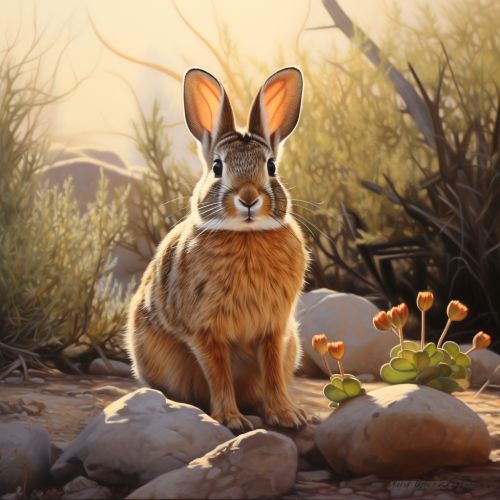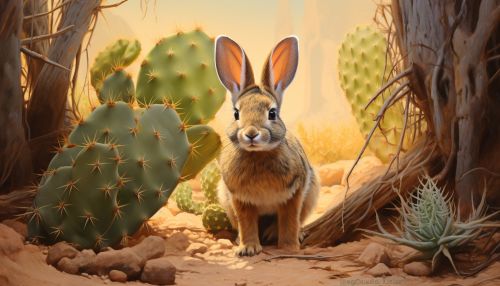Desert Cottontail
Description
The Desert Cottontail (Sylvilagus audubonii) is a species of cottontail rabbit native to the deserts of the southwestern United States and northern and central Mexico. It is a medium-sized rabbit, with adults weighing between 700 and 1500 grams and measuring from 33 to 43 centimeters in length. The Desert Cottontail is distinguished by its pale gray or brown fur, white belly, and a characteristic fluffy white tail that resembles a cotton ball, hence the name 'cottontail'.


Distribution and Habitat
The Desert Cottontail is found in the arid regions of the southwestern United States, including parts of California, Nevada, Utah, Arizona, New Mexico, and Texas. It also extends into the northern and central parts of Mexico. This species is highly adaptable and can be found in a variety of habitats, including deserts, grasslands, and scrublands. They prefer areas with dense vegetation for cover from predators, and are often found near sources of water.
Behavior and Ecology
Desert Cottontails are primarily crepuscular, being most active during the early morning and late evening hours. They are solitary animals, with each individual maintaining a home range of up to 15 acres. They communicate with each other through a series of thumps, grunts, and squeals. When threatened, they can reach speeds of up to 20 miles per hour to escape predators.
Their diet consists primarily of grasses and forbs, but they will also eat cacti, bark, and twigs when other food sources are scarce. They have a unique digestive system that allows them to extract nutrients from their food twice by re-ingesting their feces, a process known as coprophagy.
Reproduction
The breeding season for Desert Cottontails typically begins in January and continues through the summer, with females capable of producing up to five litters per year. The gestation period is approximately 28 days, after which a litter of two to eight young are born. The young are born blind and hairless, but develop rapidly and are weaned and independent within a month.
Conservation Status
The Desert Cottontail is currently listed as Least Concern by the International Union for Conservation of Nature (IUCN) due to its wide distribution and presumed large population. However, it faces threats from habitat loss due to urban development and agriculture, as well as predation from coyotes, hawks, and other predators.
